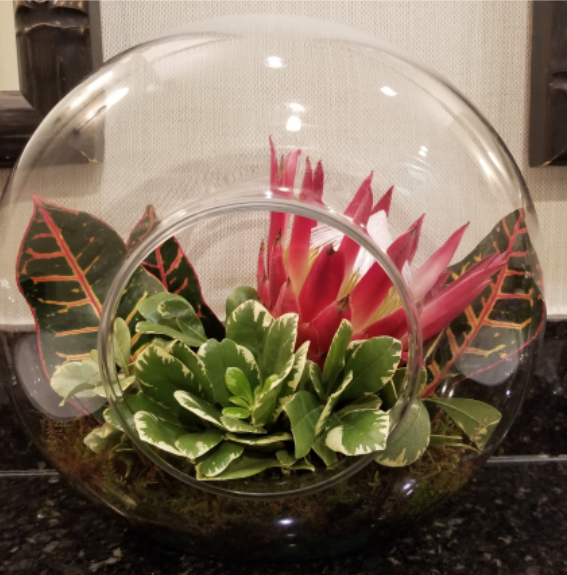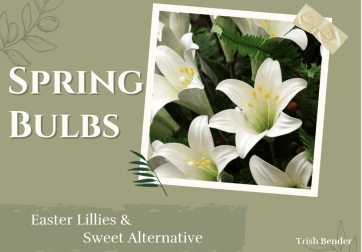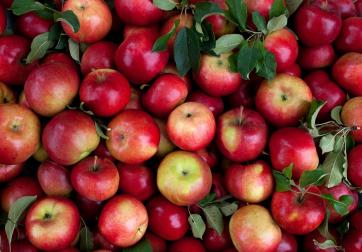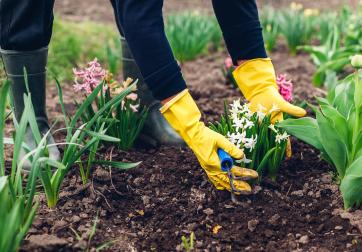GLASS GARADENS
TERRARIUMS, VIVARIUMS, AERIUMS, and DESERTARIUMS
Plants in glass containers can be an inexpensive hobby depending on what you use to make your glass garden. Your creativity and pocketbook will determine the final product! This is a fun project to do with a youth group.
Choose your plants according to the container. Most plants require about 60% humidity. Desert plants, such as cacti and succulents tolerate humidity as low as 20%. Tropical plants need as much as 90% humidity.
Terrariums are defined as miniature landscapes in a transparent container (Handbook for Flower Shows pg. 153). Gardeners often plant a terrarium when they do not have the space for a large garden. They are easy to set up, maintain, and add beauty to your home all year long.

The Wardian case, invented by Dr. Nathaniel Ward of London, was the direct forerunner of the modern terrarium and vivarium. (A vivarium, Latin for "place of life”, is an area, usually enclosed, for keeping and raising animals or plants for observation or research.) Wardian cases were used in the 19th century to protect foreign plants imported to Europe from overseas, the great majority of which had previously died from exposure during long sea journeys. While the original Wardian case consisted of unadorned glass panels and a wood frame, modern terrariums feature light, heat, fans, and geometric containers.
Suitable plants for a closed terrarium include Soleirolia soleirolii (Baby tears), Adiantum venustum (maidenhair fern) and Hypoestes (Polka Dot plant)
Water terrariums are an alternative for those who have trouble keeping plants alive or dislike routine maintenance. All you have to do is top off the water as it evaporates. Algae can be controlled with adding a piece of charcoal. Water terrariums are a great alternate to traditional terrariums if you have a cat that likes to nibble on your plants! Water plants for beginners include Bacopa monnieri (Moneywort), Anubia nana, Aegagropila linnaei (Marimo moss ball) and Dracaena sanderiana (lucky bamboo)
Desertariums are terrariums that are suited for plants that don’t require a lot of moisture. Aloe, Haworthia, and Sempervivum (hens and chicks) enjoy an arid environment.
Aeriums are containers with plants that are airborne in a hanging terrarium. Epiphytic plants grow attached to another for support only and draw nourishment from air, rain and accumulated debris, not a parasite. (Handbook Flower Shows pg. 144) Epiphytes are usually found in the temperate zone (e.g., many mosses, liverworts, lichens, and algae) or in the tropics (e.g., many ferns, cacti, orchids, and bromeliads). Epiphyte species make good houseplants due to their minimal water and soil requirements.
All the plants and containers listed above could be entered in the Horticulture Division of a National Garden Club Flower Show.
Editor's Note: The Handbook for Flower Shows is available through Member Services on the website.
Darlene Newell, Horticulture Instructor Chairman
2 Comments
I am retired. I don't want a title any more.
Hadn't heard of the desertariums. You could actually have all four enclosed environments in one room. That probably couldn't happen in nature. I may try with one & add additional ones if I'm successful.
Gardener
Very interesting article. Makes me want to try something new.

 Board Member Login
Board Member Login Our Store
Our Store Blog
Blog





